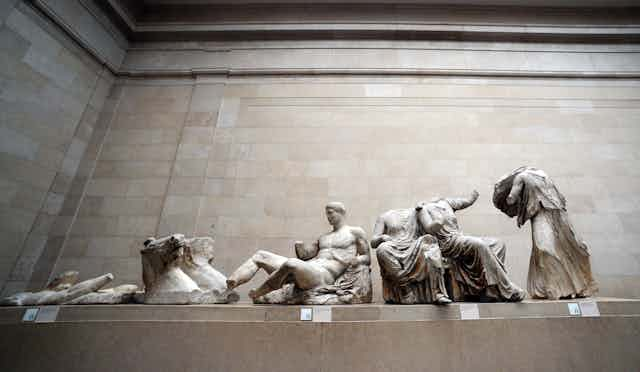Imagine for a moment that I decided that as a fashion statement, and as a white atheist male, to choose to wear a hijab. Further imagine if, as a fashion blogger, I claimed that this was my new trend. We don’t need much imagination to anticipate the outrage that it would cause – the problem is that the wrong person, is wearing it, in the wrong place and the wrong time.
Context is everything. The hijab is not simply a piece of black cloth, but one imbued with a set of meanings and symbols that have significance in this case both to a religion and its followers and, in a contrary manner, to another group of people who feel it symbolises a threat to their “way of life”.
Culture, whether manifest as politics, everyday life, or religion is a sensitive topic. In this imaginary example I can be accused of not simply acting in an insensitive way – but seeking to appropriate, to steal or to claim as my own, the symbols and appearance of other groups. The offence caused is not simply misattribution, but undermining – or what might be perceived as mocking – the cultural and religious significance of the hijab.
Examples of this issue confront us every day; a real current example concerns the (white) artist Dana Schutz’s painting Open Casket (2016) which depicts 14-year-old Emmett Till, who was lynched in Mississippi in 1955, lying in his coffin. Till’s mother, Mamie Till Bradley, had insisted her son be buried in an open casket so that the world could see his horrifying injuries.
The press photographs taken at his funeral became iconic images that helped drive the civil rights movement. Schutz’s painting has drawn accusations of cultural appropriation of a symbolic event and image.
The debate hinges on whether this use of the image should be disallowed on the grounds of the topic being too “sacred”, or due to the artist being white – could she fully appreciate the importance of the symbol? Till’s mother is not happy either. She says her desire to tell the world what happened to her son doesn’t cover Schutz’s paintings.
Cultural conversations
Particular cases are always complex. We need to be clear in our thinking and what is at issue. Does this mean that people should never share or adapt another culture’s signs or symbols? Culture would be rendered static and dead if this were the case – we can all recognise that new culture arises from the “conversation” with other cultures, or those traditions of the past. Think of fine art, music or writing.

Most US and UK rock and roll bears the DNA of the delta blues musicians who innovated the form. However, respect was not always paid to these originators by many musicians who often treated it as a common property. There is a line to be drawn between respect and disrespect.
Many of us have marvelled at the Elgin marbles in the British Museum. But how did they come to be there. We can’t properly call Lord Elgin’s removal of the sculptures from the Parthenon theft as there is a dispute over claims that Elgin had legal title from the Ottoman empire. But is this not at the very least cultural appropriation?
If culture is anything, it is about constructing the meaning of things and events for a group – and this is necessarily rooted in place and time. Remove the “culture” from the context and it is diminished, or negated. Hence, the example of me wearing a Hijab, or perhaps Elgin displaying the Parthenon marbles in his front room. However, we commonly accept other positions.
So, if I take a melody, or an image, or phrase I can use it, sample it, or quote – if I get permission. The rights of the author extend to control how that cultural idea is expressed, but particularly the context – the concern is to maintain the integrity of the art. This second position is what we might call cultural exchange, based on an agreed usage in a particular context – one that the author agrees respects the original.
A third possibility is that there is a new cultural creation formed from a dialogue between the different cultural forms, one that engages with the meanings of the originals and forges new ones from them. Here the cultural product is neither one, nor the other or the originals – nor is it a licensed reuse or copy. This is the essence of creativity and how newness enters the world.
Culture of creativity
Last month Nike produced a new product, its sport hijab. Is it offensive, is it cultural appropriation by a multinational? I’m not going to judge everybody’s response to this, but I think this falls into the second category – and maybe the third, a new cultural creation. It was designed in collaboration with hijab wearers and religious authorities, as well as Nike.

Perhaps a more radical and innovative act was the development of the burkini, a classic attempt to take two different cultural traditions and innovate at the same time. Just as with regular swimwear, context is all – wearing it in the office is likely to cause offence.
The debate is not simply one of censorship. It is the subject position that matters (who is saying or doing the act), whose “traditions” or “culture” are being used – and with whose permission. Culture and meanings do not exist outside society and meanings depend on respecting the views of those concerned. In the Shutz case, this should mean consulting Mamie Till Bradley and the civil rights community. These are the those voices needed to be part of a real debate, rather someone from outside the community whose idealised notion of what constitutes “censorship” has nothing to do with the rights or feelings of those concerned.

